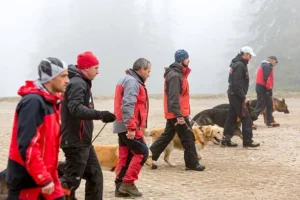Running has played an important role in human history, particularly in Ancient Egypt and Ancient Greece. From ceremonial races to military training, running was a key element of life in these ancient civilizations. This article explores the history of running in ancient civilizations. With a focus on Ancient Egyptian sports and running, cultural significance of running in Native American tribes, and the origins of the modern marathon.
History of Ancient Running Civilizations
Running is one of the oldest forms of physical activity known to humanity. Its origins trace back to the early days of human civilization. While it is impossible to pinpoint exactly when running was invented, evidence from Ancient Egypt and other ancient civilizations shows that running was a vital part of both daily life and ceremonial traditions. In Ancient Egypt, one of the earliest known formal races took place during the heb sed festival, a ceremonial race that occurred every 30 years during a pharaoh’s reign. This festival began as early as 3000 BC, showcasing how running was linked to both leadership and physical prowess in ancient times.
Ancient Egyptian Sports and Running
The significance of running in Egypt went beyond ceremonial events. In the 7th century BC, Pharaoh Taharqa organized a long-distance race covering approximately 62 miles (100 km), nearly 2.5 times the distance of a modern marathon. This race, which included a two-hour break halfway through, demonstrated the Egyptians’ remarkable endurance and physical strength. Additionally, there was the Pharaonic Race from 690-665 BC, where soldiers ran 100 km, with the winner reportedly completing it in 8 hours.
Egyptian Military Running Training
Running was also a fundamental part of the Egyptian military training regimen. Soldiers needed to develop endurance and speed for long-distance marches and swift attacks. Events like the Pharaonic Race weren’t just for ceremonial purposes but also served as endurance tests for soldiers, preparing them for the rigors of battle.
Spiritual Meaning
Running in ancient civilizations had deep spiritual and symbolic meanings. In Egypt, the heb sed festival was not only a display of the pharaoh’s physical vitality but also a religious act meant to renew his divine rule over Egypt. In Native American tribes, running often symbolized a connection to the spiritual world, and it was involved in many sacred ceremonies.
Ancient Running Techniques
Running techniques in ancient civilizations were adapted to the needs of the people. Egyptians, for instance, developed techniques to endure the harsh desert environment, such as pacing themselves across long distances. Similarly, the Greeks also developed specific techniques for their races, particularly for the stadion and dolichos races.

Marathons in Ancient Times
The concept of the marathon originates from the legendary run of Pheidippides in 490 BC, when he ran approximately 153 miles (246 km) over one and a half days to deliver a message. Though modern marathons cover a distance of 26 miles (42 km)—first standardized during the 1896 Olympic Games—Pheidippides’ journey was much longer, symbolizing endurance on an extraordinary level.
Running Practices in Native American Tribes
For Native American tribes, running wasn’t just for athletic competition; it was a necessity for survival. Long-distance running was common for communication between villages or for hunting expeditions. The remarkable endurance of Native American runners is comparable to the long-distance runners of ancient Greece and Egypt.
Native American Endurance Running
Native American endurance running remains legendary, with runners capable of covering hundreds of miles over the course of several days. This endurance is similar to the feats achieved in ancient Egyptian and Greek long-distance races, showcasing that running has always been an essential part of human survival across different cultures.
Cultural Significance of Running in Native American Tribes
The importance of running in Native American tribes went beyond physical necessity; it was part of their spiritual practices. Ancient running civilizations was often a rite of passage or a way to honor the gods, much like the ceremonial races of the Heb-sed festival in Egypt.
Running Rituals in Ancient Cultures
Both Egypt and Greece held formal running rituals. In Ancient Greece, the stadion was the central event of the Olympic Games, where runners competed in distances between 157-196 meters, with the standard distance at Olympia being approximately 192 meters. Additionally, in 720 BC, the Greeks introduced the dolichos, a long-distance race that could reach 5,400 meters (3.36 miles). While the dolichos was not initially a main event, it became a celebrated race for endurance athletes over time.

Role of Running in Ancient Warfare
Running played an essential role in military strategy in both Egypt and Native American tribes. Egyptian soldiers trained rigorously for long-distance marches and quick sprints during battle. The Pharaonic Race is one example where military training involved running vast distances, preparing soldiers for the physical demands of warfare. Similarly, Native American warriors used their endurance to outlast enemies, often running for miles during combat.
Ancient Olympics and Running
The Ancient Olympics in Greece were iconic for their running events, with the stadion being one of the most important races. The Olympians, like the famous Leonidas of Rhodes, showcased their athletic prowess by competing in multiple events. Leonidas, who won all three running events at four consecutive Olympiads between 164 and 152 BC, became a symbol of endurance and athletic excellence in the ancient world.
Historical Running Races in Ancient Cultures
In Greece, the legendary marathon run by Pheidippides after the Battle of Marathon became the foundation for the modern marathon. Meanwhile, Egypt’s Pharaonic Race and Greece’s Olympic stadion and dolichos demonstrate how running was central to the physical and spiritual culture of these societies.
Conclusion
The history of running in Ancient Egypt and Ancient Greece is rich with ceremonial significance, military applications, and impressive athletic feats. From the heb sed festival in Egypt to the stadion and dolichos races in Greece, running has always been more than just a physical activity it was a symbol of endurance, spirituality, and strength. These ancient civilizations athletic traditions have shaped the modern understanding of running, particularly in the marathon, a race that continues to inspire athletes around the world.
FAQs
1. What was the Heb-sed festival race in ancient Egypt?
The Heb-sed festival was a ceremonial race that took place every 30 years during a pharaoh’s reign. It symbolized the renewal of the pharaoh’s power and divine rule over Egypt.
2. How long was the race organized by Pharaoh Taharqa?
Pharaoh Taharqa’s race in the 7th century BC covered approximately 62 miles (100 km), nearly 2.5 times the distance of a modern marathon.
3. What was the length of the stadion race in ancient Greece?
The stadion race in ancient Greece varied between 157–196 meters, with the standard distance in Olympia being approximately 192 meters.
4. How long did Pheidippides run after the Battle of Marathon?
The legendary run of Pheidippides was about 153 miles (246 km), which he covered in one and a half days.
5. What is the origin of the modern marathon distance?
The modern marathon distance of 26 miles and 385 yards was established during the 1908 London Olympics, although earlier marathons varied in length, often around 40 km (25 miles).












